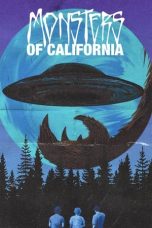- Source: 2023 DW
2023 DW is a near-Earth asteroid of the Aten group. It is approximately 50 meters (160 feet) in diameter, roughly the size of the asteroid that caused the Tunguska event, and was discovered by Georges Attard and Alain Maury, from the MAP (Maury/Attard/Parrott) asteroid search program in San Pedro de Atacama on 26 February 2023, when it was 0.07 AU (10 million km) from Earth. On 28 February 2023, with an observation arc of 1.2 days, it was rated 1 on the Torino scale for a virtual impactor on 14 February 2046 at 21:36 UTC. The nominal approach is expected to occur about eight hours before the impact scenario at 14 February 2046 13:15 ± 72 minutes. Between 5–8 March, the asteroid was not observed as it was within 40 degrees of the waxing gibbous moon. On 14 March 2023 the European Space Agency was the first to drop to a Torino scale rating of 0. Sentry dropped to a Torino scale rating of 0 on 16 March 2023. It was completely removed from both risk tables on 20 March 2023.
2023 DW currently orbits the Sun once every 271 days. It came to perihelion (closest approach to the Sun) on 26 November 2022, and then approached Earth from the direction of the Sun making closest Earth approach on 18 February 2023 at distance of about 8.7 million km.
Risk
With an observation arc of 13 days it peaked at a Palermo scale rating of –1.89 with the odds of impact then being about 78 times less than the background hazard level. It was removed from the risk table on 20 March 2023.
= Risk corridor
=Risk corridor as it was known on 3 March 2023 with a 4-day observation arc and 55 observations. The asteroid would have most likely impacted the Pacific Ocean. At the time of the potential impactor, the asteroid is most likely to miss Earth by about 4.7 million km and has a 3-sigma uncertainty region of ± 3 million km. As the uncertainty region gets smaller the probability of impact can increase and then suddenly drop to 0.
Notes
References
External links
2023 DW at NeoDyS-2, Near Earth Objects—Dynamic Site
Ephemerides · Observation prediction · Orbital info · MOID · Proper elements · Observational info · Close approaches · Physical info · Orbit animation
2023 DW at ESA–space situational awareness
Ephemerides · Observations · Orbit · Physical properties · Summary
2023 DW at the JPL Small-Body Database
LOV (uncertainty region): 5000 clones calculated in SOLEX 12.1. Based on 60 observations through March 4 / 5000 clones, SOLEX 12.1, 69 observations through March 11 / 5000 clones, SOLEX 12.1, 104 observations through March 15 (ptastro1)
Risk Corridor Calculations: Piero_Sicoli and StevearenoBR
Discovery circumstances: Alain Maury's blog
Kata Kunci Pencarian:
- 2008 DW
- Kerusuhan penjara Támara 2023
- Agus Martowardojo
- DWTV
- 2007 DW
- Li Keqiang
- 2009 DW
- Gempa bumi Mindanao Desember 2023
- Senjata api
- BRICS
- 2023 DW
- Deutsche Welle
- 2023
- DW-TV
- DW News
- Nigerien crisis (2023–2024)
- G-Shock
- Typhoon Doksuri
- 2023–2024 El Niño event
- Guyana–Venezuela crisis (2023–present)
- 1
- 2
Oppenheimer (2023)
Godzilla Minus One (2023)
Monsters of California (2023)
The Zone of Interest (2023)
Case 30 (2023)
No More Posts Available.
No more pages to load.














